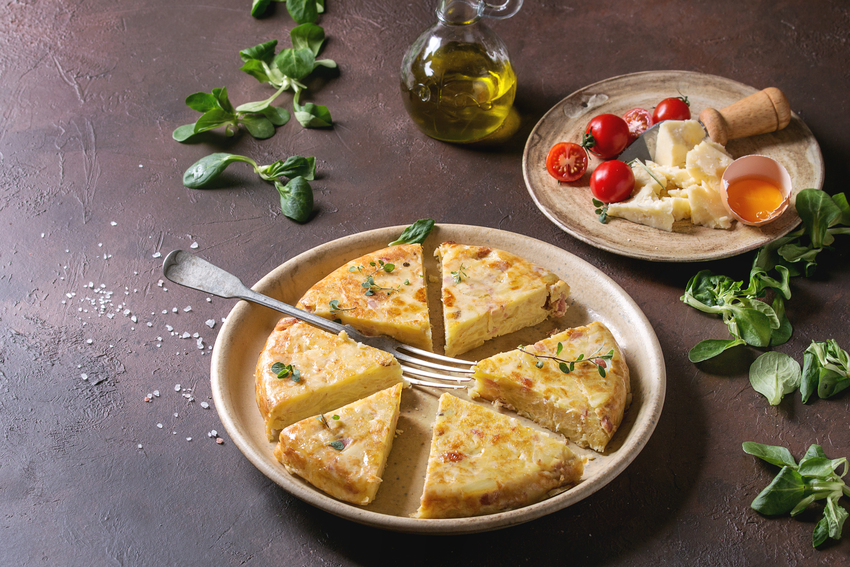It’s quite likely that you’ve already heard about the different ranges of food products, so it may not come as a surprise that there are now more and more fifth-range restaurants. Until fairly recently, these terms were used almost exclusively within the food industry, but they’ve now entered wider use. At Manageat, where we’re dedicated to sharing our expertise in the restaurant business, we want to make sure you’re well informed. That’s why we’d like to explain exactly what a fifth-range restaurant is and share our thoughts on the subject. As always, we hope you find this article useful — and perhaps it will encourage you to reflect on how your own kitchen operates.
What are the food ranges?
We won’t go into too much detail here, as you’re probably already familiar with the types of foods that fall into each range. Besides, there’s already plenty of excellent material published on the subject — here are just a couple of examples. Simply, and for the sake of clarity, let’s recall that the different food ranges are classified according to the degree of processing they have undergone.
So, first-range foods are fresh products. Second-range refers to canned or tinned goods. In the third range, we find frozen foods. The fourth range, on the other hand, includes fresh products that have been minimally processed (at most peeled, chopped or sliced) and preserved in a protective atmosphere, usually vacuum-packed or sealed in airtight bags. Finally, the fifth range consists of fully cooked foods that are ready to eat and generally only need to be heated before serving.
As a curious note, there’s even talk of a sixth range, which includes freeze-dried foods whose original texture has been altered — although its definition is not yet entirely clear.
What are fifth range restaurants?
A fifth range restaurant is an establishment that mainly serves pre-cooked dishes which usually only need to be heated, plated, and perhaps finished off with a garnish, herb or spice. The number of such restaurants has grown significantly in recent years, especially in urban areas. In fact, there are many more than you might imagine. Their visibility, however, is inversely proportional to their expansion, making them a constant topic of debate.

Key considerations about fifth range foods and restaurants
1. Fifth range products can be high-quality or not, just like any other food
We should not let prejudice cloud our judgement of these dishes and restaurants. As with fresh, canned or frozen products, there is a wide spectrum: excellent, good, average or poor. It would be wrong to categorise all fifth range foods as undesirable.
In fact, they are subject to rigorous health and quality controls, often processed with advanced technology to eliminate microorganisms while maintaining their nutritional value and shelf life. Their traceability is also often more reliable than that of first or third range foods.
2. Spotting a fifth range restaurant is easier than you think
Much easier than you might think. As we mentioned earlier, it’s also a phenomenon that’s growing rapidly. There are a few tell-tale signs that can give you almost complete certainty that the place where you’re having lunch is a fifth-range restaurant.
First, the serving time. Not so long ago, you had to order a paella at least half an hour in advance; now it’s served instantly. Second, the size of the menu. As we’ve said in previous posts, less is more; the shorter, the better. If a restaurant offers an endless list of dishes yet has a very small kitchen team, very few of those dishes are being cooked to order. It’s simply impossible. Third, the prices, which tend to be quite affordable no matter what you choose. And finally, although there are plenty of other clues, you may have that feeling of déjà vu, as if you’ve eaten the very same dish somewhere else. Chances are, you have, since the same prepared dishes are often sold to multiple restaurants.

3. Nearly all restaurants use some fifth range products
If we take another look at the concept of fifth-range food and think it through carefully, we’ll quickly come to this conclusion: fifth-range food refers to products that are ready to eat, either hot or cold. Cooked, ready-to-eat foods can be found in virtually every restaurant, regardless of its category or level. Sauces and stocks are the most common examples, but you’ll also often find cooked vegetables, gazpacho, lasagne and many other similar items.
However, it’s important to note that this doesn’t mean all of these foods are bought in from external suppliers; that’s usually the case in fifth-range restaurants. In other establishments, it’s far more common for the chefs themselves to prepare this kind of food in advance from ingredients belonging to other ranges, with the aim of saving time during upcoming services. In fact, if that weren’t the case, the day-to-day operations of most restaurants would face serious difficulties.
4. Everyone has eaten fifth range food at home
When we hear the term fifth-range restaurant, it almost sounds scandalous. But the truth is, every one of us has eaten this kind of food at some point. roast chicken, pizza, cannelloni, and so on. The food industry has certainly taken note of our habits, which is why it’s no surprise that supermarket shelves are increasingly giving more space and visibility to these products. It seems that fifth-range food is here to stay.

5. Visiting these restaurants depends on customer needs and budget
What we mean by this is that fifth-range restaurants also have their advantages, particularly from the customer’s point of view. Among their main benefits are time savings, a wide variety of dishes, and affordable prices. In other words, this type of restaurant will always attract a certain clientele: people who value quick service, menu variety, and a specific budget range.
For instance, the rushed office worker with a short lunch break, the person who eats out every day, or the employee with a fixed meal allowance that can’t be exceeded. In short, what we want to highlight is that every type of restaurant has its own audience, whether it’s third-, fourth-, or fifth-range.
6. Fifth range restaurants should not be compared with others
As the saying goes, comparisons are odious. And that’s exactly what happens when we try to compare a restaurant that bases its cuisine on fresh ingredients with one that mainly serves fifth-range dishes. It’s difficult to make a fair comparison, because in reality each works with a completely different product. A fast-food outlet has nothing in common with a traditional set-menu restaurant, as what they offer is entirely distinct.
They’re simply different types of business, and therefore shouldn’t be measured by the same standards. Are they recommendable or not? That depends entirely on what the customer is looking for, and, as always, the customer is right.



